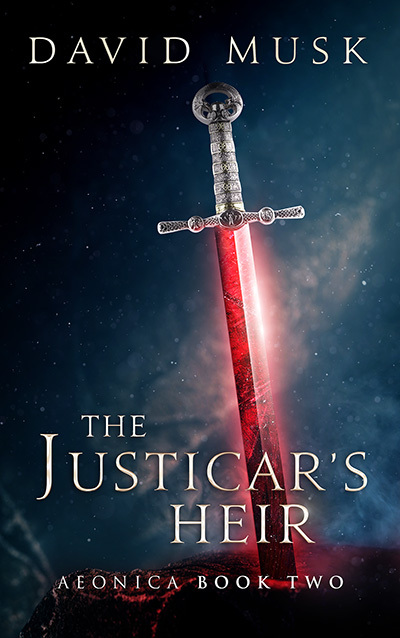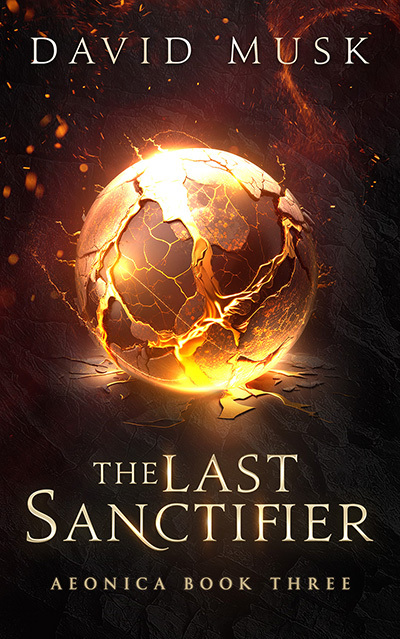How to Open Your Webnovel
July 26, 2020 · 7 minute read
People on the internet have short attention spans. It's easy to click from one thing to another, and if something doesn't catch our interest within the first few sentences, that's exactly what we do. We click away.
If you're like the average internet user today, chances are you have multiple tabs open in your browser right now. You might even have multiple devices on hand (phone/computer/tablet) or multiple monitors. Maybe you have a YouTube video playing in one tab, and a social media feed in another.
With so much competing for our attention, readers will naturally gravitate toward the most entertaining thing.
If you want your webnovel to gain readers, then your opening chapter needs to be that thing.
Here are a few tricks to get the most out of your story's opening.
1. Start With a Character
Preferably in the first paragraph, if not the first sentence
Most of us—whether we're reading or writing—already understand this rule. When we begin a new story, we need a character to ground us in the world. We need to experience this world through a specific person's eyes. Usually, the protagonist fills this role.
But you'd be surprised how long it takes some authors to introduce their protagonists. I've seen dozens of stories where the opening lines give us lengthy descriptions about the weather, the scenery, or infodumps about gods, magic, or the creation of civilization.
The problem is, it's hard to care about the weather if we don't know who it's affecting. And it's hard to care about the world if we don't know who inhabits it. When I open a story like this, I can't help but feel I'll forget these details by the time they're relevant. I have to fight the urge to skim through the text until I find a character.
Famous authors can get away with this because they've built up trust with their readers—we know something good is coming, so we're willing to be patient. But for an aspiring webnovelist, you need every advantage you can get.
Here's an example from Forge of Destiny by Yrsillar:
The carriage was impossibly fast, Ling Qi thought, as she stared out the tiny window at a landscape that was little more than a green and brown blur.
2. Put the Character in a Scene.
Even if you start with a character in your opening sentence, that doesn't mean things are happening yet. It's easy for characters to sit around contemplating life, and it's easy for a writer to sneak in paragraphs of worldbuilding or backstory this way.
One way to ensure you're writing an actual scene to use action and dialog. Here's the opening of Mother of Learning by Domagoj Kurmaic:
Zorian's eyes abruptly shot open as a sharp pain erupted from his stomach. His whole body convulsed, buckling against the object that fell on him, and suddenly he was wide awake, not a trace of drowsiness in his mind."Good morning, brother!" an annoyingly cheerful voice sounded right on top of him. "Morning, morning, MORNING!!!"
Notice all the action verbs in the first paragraph alone: shot, erupted, convulsed, buckling, fell. After that, we get some dialog from his sister. Mother of Learning is a sprawling epic fantasy with an in-depth world and magic system, but it starts with a character in a scene.
3. Give the Character a Goal
Not all scenes are created equally. "Mary gazed at the sunrise," might technically be a scene, but it's missing something. What does Mary want? Also, what's preventing her from getting it? If we can answer these questions, we've started building conflict, and conflict keeps readers around.
To quote Kurt Vonnegut: "Make your characters want something right away even if it's only a glass of water."
Goals and conflict will be important throughout your story, but your opening paragraphs are where they matter the most. If your prospective readers don't make it past the beginning, they'll never experience the amazing things you wrote later.
Here's the opening sentence from Aeonica: The Lost Redeemer.
Nahlia crawled through a forest of leather and parchment, searching for forbidden knowledge.
I chose my own story for this example because it happened to include a goal in the opening sentence (searching for forbidden knowledge.) But Mother of Learning also reveals Zorian's goals within the first few paragraphs (he wants to go through his morning routine in peace.)
Not only do character goals introduce conflict, but they give us an opportunity to see the protagonist solving problems and reacting to his/her environment. Instead of telling the reader, "Mary hated crowds," we can show her actively avoiding a crowd. Instead of saying "Bob was smart," we can show him attempting to solve a difficult problem.
4. Limit Backstory to the Bare Minimum
This includes backstory about the world, along with the protagonist's personal backstory.
A lot of new writers think they need to cram paragraphs of backstory into their opening pages. If they don't, they worry their readers will be confused. But most readers are willing to accept some confusion early on. They know the story just started, and it's impossible for them to understand everything.
Instead of educating your readers, try to focus on entertaining them. If they're engaged by the opening scenes, they'll gladly wait for the backstory. Even if it means waiting for entire chapters to learn basic things about the world. Give them time to ask the questions themselves, then they'll appreciate the answers even more.
As an exercise, try searching for the word "had" in your story's opening scene. Not every instance of this word will indicate past events, but many will. How often does do backstory dumps appear? Does the scene still make sense if you remove them?
I tried this exercise on Mother of Learning, and the first bit of backstory doesn't occur until the 14th paragraph (roughly the second page, in physical book terms.) Even that was only a single sentence.
5. Add a Hook
In other words, make the readers curious about something. Encourage them to ask a question, and then hold off on the answer until later. This gives them a reason to keep reading. Once you have the basics down, this is one of the best ways to take your opening to the next level.
Class ended in five minutes and all I could think was, an hour is too long for lunch.
This immediately brings several questions to mind. Don't most students enjoy lunchtime more than sitting in class? Why doesn't she?
Worm is another great example of an epic story—well over a million words—with hundreds of characters and a massive world. But Worm doesn't start off by explaining the history of the world, the backstory of the characters, or where the superpowers came. It starts with a character (Taylor) and a simple goal (to stay in class where it's safe.)
Here's another example of a hook in the opening line of Epilogue by Etzoli:
When I woke up, I was seven years younger.
As always, I hope this helps! Keep in mind, these are all suggestions for possible improvement rather than set-in-stone rules. If you don't follow these, that doesn't mean your story is doomed to obscurity. As a final example, just look at the opening lines for A Practical Guide to Evil. It breaks every single one of these '"rules" with a lengthy prologue, and it's still successful:
In the beginning, there were only the Gods.
Aeons untold passed as they drifted aimlessly through the Void, until they grew bored with this state of affairs. In their infinite wisdom they brought into existence Creation, but with Creation came discord. The Gods disagreed on the nature of things: some believed their children should be guided to greater things, while others believed that they must rule over the creatures they had made.
This goes on for a while.
However, I would argue that A Practical Guide to Evil is successful despite its opening rather than because of it, and the author makes up for it with the opening line of Chapter 1, which does follow all the above guidelines:
The punch landed right in my eye, rocking me back.
Here, we have a character (Catherine), a goal (to win the fight), and a hook/question (will she win despite taking a punch to the face?)
Again, don't fret if your opening is nothing like the ones I'm describing, because you're still in good company. One of my all-time favorite novels (The Name of the Wind by Patrick Rothfuss) begins with a page-long prologue that exists solely to set the scene and establish tone.
However, if you're looking to gain an edge in readership gains, then making a few of these tweaks might be a good place to start.



